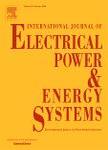版权所有:内蒙古大学图书馆 技术提供:维普资讯• 智图
内蒙古自治区呼和浩特市赛罕区大学西街235号 邮编: 010021

作者机构:Zhejiang Univ Polytech Inst Hangzhou 310015 Peoples R China Zhejiang Univ Coll Elect Engn Hangzhou 310027 Peoples R China China Univ Min & Technol Sch Elect Engn Xuzhou 221116 Peoples R China
出 版 物:《INTERNATIONAL JOURNAL OF ELECTRICAL POWER & ENERGY SYSTEMS》 (国际电力与能源系统杂志)
年 卷 期:2024年第156卷
核心收录:
基 金:National Key Research and Devel-opment Program of China [2020YFB0906000, 2020YFB0906002] National Natural Science Foundation of China
主 题:Demand response Particle swarm optimization Temporal-spatial feature Mixed-integer second-order cone programming Electric vehicle aggregator
摘 要:Burdens of increasing penetration of electric vehicles (EVs) on distribution systems have attracted wide attention to the research of EV charging coordination. Nevertheless, existing coordination lacks the joint consideration of the temporal-spatial flexibility of EVs, which could reduce load fluctuations when meeting the EV charging demands. Moreover, a thorough investigation is required for the coordination of the benefits to the distribution system operator (DSO), EV aggregator (EVA), and EVs. In this paper, a novel EV charging scheme considering the temporal-spatial features of EVs is proposed, achieving the coordination of DSO, EVA, and EVs in two steps. First, a mixed-integer second-order cone programming (MISOCP)-based EV charging schedule is developed for DSO. Second, the temporal-spatial features of EVs are exploited by EVA to track the charging schedule. Specifically, a dynamic charging price mechanism based on active power margin is proposed for public charging facilities and a specific load regulation is designed for private charging facilities. On this basis, the modified adaptive multiobjective particle swarm optimization (AMOPSO) algorithm is proposed, including adaptive flight parameter adjustment and termination mechanisms. Case studies demonstrate the proposed strategy can attenuate load variance and raise EVA revenue. Further, the impact analysis of penalty price and the price elasticity of electricity demand can provide references for stable distribution network operation, higher EVA revenue, and charging cost reduction.